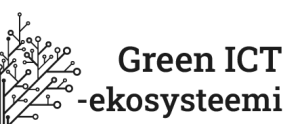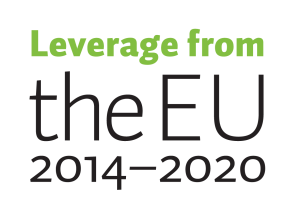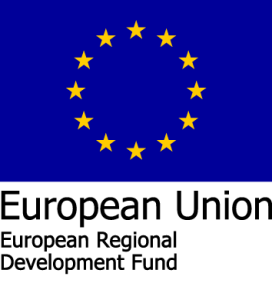
Green ICT is poised to alter the way ICT business will be conducted in the future. There will be increasing pressure on the ICT industry, from regulators as well as from end consumers, to manage their environmental footprints better. As awareness and consciousness about corporate and personal consumption footprints increase, there will be an inherent requirement for Green ICT products and services. Consequent to this reality, there are numerous opportunities for businesses to leverage Green ICT to grow themselves in a responsible, eco-friendly way.
Another driver of the green transition both in Finland and the European Union internal markets is the tightening of green public procurement guidelines. In recent years, the European Union has published Green Public Procurement (GPP) guidelines for four ICT categories and tightened the RoHS and WEEE directives. GPP guidelines have been published for computers, displays, mobile devices, printers, and data servers and cloud services. The Finnish government has amended procurement legislation to better consider sustainability criteria. There is also the HankintaSuomi program and KEINO-verkosto to further sustainability in procurement.
Opportunities in delivering Green ICT can broadly be placed in the following categories, although this is not a comprehensive list.
Energy-efficient hardware and software solutions
The energy footprint of digitalisation is growing exponentially, thus opening up possibilities for developing and deploying energy-conscious hardware and software solutions. These solutions can take a wide variety of forms – such as using green renewable energy sources to power servers, diverting the heat generated from servers for heating purposes (Pärssinen 2019), optimising processors further for lower energy consumption per unit execution, efficient data storage solutions, and a host of other such possible solutions. These can lead to a significant reduction in the energy footprint of the ICT industry. The solutions are not only green – benefiting the environment – but are also economically beneficial to businesses by reducing the operational costs involved. Moreover, increasing end-user consciousness for sustainability and environmental impacts means that there will be significant demand from end-users for greener alternatives regarding their ICT consumption – the consumer will positively reward Green ICT in the future.
Circular economy
Increased digitalisation in all aspects of personal and professional life has led to exponential growth in the production of e-waste. Hardware lifespans are short by design or imperatives of profit, and software is rarely designed to be forward/backward compatible – all leading to a frequent buy-use-discard cycle. E-waste poses significant environmental and health risks; moreover, the hardware is not designed to make recycling easy/cost-effective (Vishwakarma 2022). Shorter life cycles puts more pressure on mineral resources, especially rare earth metals, and this, in turn, leads to its own set of geo-political and human rights issues. In the face of these realities, circular economy principles can be leveraged to deliver profitable Green ICT solutions.
Green ICT solutions can encore circular economy principles from the design stage by emphasising product longevity, reuse, and effective recycling (recycling by design). Hardware can be designed to be modular for easy repairs and upgrades; materials can be used in such a manner that reclaiming them is cost-effective during recycling. Businesses can investigate their roles in recycling their products – by designing effective recycling into the product tuned to their products. Green ICT businesses providing cost-effective repair, refurbishing, and recycling will likely find growth opportunities in the near to long-term future – when the mineral resources will either be depleted or significantly more expensive than today. Software providers can investigate increasing the lifespans of their products, ensuring backward/forward compatibility for a wider range, providing support for a more diverse platform offering, and other such measures. Green ICT leveraging circular economy ethos can offer a dual advantage of a reduced environmental footprint as well as new economic opportunities.
Digitalising traditional business models
Green ICT can further extend the ongoing digitalisation of businesses while ensuring minimal environmental impacts. Software solutions such as virtualisation, software as a service (SaaS), aggregator models, and cloud computing, can potentially enable a greener shift to digitalisation. These solutions can conserve resources (compared to the traditional bespoke onsite digital solutions) and offer increased flexibility and real-time scalability with comparatively lower ecological footprints. Many traditionally in person business models and practices have increasingly moved to the digital space. Working from home, virtual meetings, collaborative planning, text and spreadsheet tools, and virtual workspaces have enabled this transition.
Green ICT enabled smart manufacturing
One of the largest handprint opportunities of Green ICT lies in manufacturing industries. The whole production chain can benefit from smart solutions and overall effectiveness gains. ICT-enabled following of procurement of raw materials allows for anticipating material shortages and finding alternative sources. Automation, robotics, and machine learning can reduce loss in production and raise general effectiveness. IoT-enabled machinery on production lines can provide data on production and find anomalies in operation, so maintenance can be anticipated. Quality control can be enhanced by machine vision combined with machine learning for greater durability of products. Logistics can be enhanced with smart contracts and blockchain-enabled bills of lading. Digital product passports enable data on raw material content of products, which makes following material cycles easier, further enabling circularity in the economy.
Transparency and accountability
Green ICT solutions can be built and deployed to ensure transparency and accountability in the sustainability practices of businesses, governments, and organisations. Regulations, policies, and strategies, as well as changing consumer outlook, have led to a demand for accurate, verifiable information about products and services with respect to their environmental footprints. Consumers have voted with their wallets for more responsible and ethical product choices. Therefore, there is a significant and growing market for Green ICT tools that enable businesses to monitor and report their carbon footprints, raw material sourcing and such. There are opportunities for Green ICT tools that can make carbon accounting, energy management, energy source mapping, point of origin mapping for component minerals, tracking of waste (including e-waste) disposal, and other allied areas. There is still a large greenwashing problem in ESG and sustainability reporting.
Sustainable cities and communities
Green ICT can enable greener, more sustainable cities and communities. It can be leveraged in areas such as smart energy distribution and management, intelligent waste management and disposal, smart public transportation systems, and so on. All these areas constitute significant carbon footprints when it comes to the existing cities and their infrastructures. Green ICT solutions can enable significant savings in energy and optimisation in transport so as to reduce fuel consumption (fossil and otherwise), increase recycling, and reduce pressures on landfills. It has the potential to enable sustainable cities and communities while providing profitable and ethical business opportunities.
References
• Pärssinen, M , Wahlroos , M , Manner , J & Syri , S 2019 , ‘ Waste heat from data centers : An investment analysis ‘ , Sustainable Cities and Society , vol. 44 , pp. 428-444 . https://doi.org/10.1016/j.scs.2018.10.023
• Vishwakarma S., et al., ‘E-waste in Information and Communication Technology Sector: Existing scenario, management schemes, and initiatives’, Environmental Technology & Innovation, Vol 27, 2022
• Green ICT for SME’s in Central Finland project webinars: https://tieke.fi/hankkeet/greenictpkteollisuuskeskisuomi/






